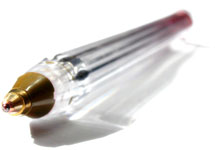Some seriously smoking South African stuff: Boschendal "The Pavillion" Shiraz Cabernet Sauvignon 2005

This is for Alex, whom I am a fan of. Alex works at ArtJava downtown, my regular coffee stop.
Alex, last name St-Laurent, was trained by Anthony Benda, who is currently the third-ranked barista in the country (he placed as a runner-up in a strong debut performance at the Canadian Barista Championships last fall).
These are big shoes for Alex to fill no doubt, but with his keen aptitude no one doubts he could do it. One day at ArtJava, Alex surprised me with his interest in wine. He approached me for advice on how he could find and drink more of the red wines that he most enjoys. He already knew most of what he needed to know -- that he likes a style of red wine with a smoky flavour profile -- and he even knew that Syrah would be the varietal that would most likely offer him this.
All that was left for me to do was consult my back pages to see what's a good deal on wines like these and not be too far from a roughly $20 to $30 price range he set for himself.
It's practically do-it-yourself blogging. But Alex is a smart guy, so what do you expect?
Links to original reviews feature clickable images that navigate directly to the SAQ online catalog, where you can check the supply of the wine and which stores near you stock it.
- Smoke-filled blueberry goodness ... actually greatness! (but run to get remaining bottles): Château Cabrières Coteaux du Languedoc (rouge) 2001 $21 (including all taxes)
- A "Pastiche" of red fruit, but notable smokiness: Joseph Phelps Vin du Mistral Red Pastiche 2005 $18
- A non-Syrah-based taste of smoke with a Pinot Noir varietal supplying greater acidity (LCBO only): Francis Coppola Diamond Collection Silver Label Pinot Noir 2005 $28
- Smoky bargain of the 2004 vintage, and of recent releases too probably: Château Mire L'Étang Cuvée des Ducs de Fleury Coteaux du Languedoc La Clape 2004 $17
And last but definitely not least, Boschendal "The Pavillion" Shiraz Cabernet Sauvignon Coastal Region 2005:
- The paradigm of Syrah smoke from South Africa, done up with notes of petrol and wood that give it a blue cheese tone typical of many New World wines; but here it is exceptional for its smart balance, extraction of fruit and stunning texture: Boschendal "The Pavillion" Shiraz Cabernet Sauvignon Coastal Region 2005 (The bargain of the bunch at $16 -- but I have not yet tasted the 2006 vintage that is rapidly replacing the 2005s.)
Pniel Road, Groot Drakenstein, South Africa. 14%.
Update: I pointed to a picture of the Pavillion bottle (at top) which I found on the web after SAQ.com, who stocks it within the province, ran no image of it in their catalog. It's laziness of me for not taking a photo of the bottle myself. But it's sheer stupidity I didn't better explore the site that the picture came from.That site is EWine.co.za -- not to be confused with EWineCentral.com -- and it is apparently more than a your typical online wine vendor. They house a lot of good content on the South African wineries and winemakers, including audio media, like the sound file of an interview with Boschendal vintner JC Bekker, all placed nicely on a a profile page devoted to Boschendal. Louis Ferreira, who runs the Ewine.co.za site, provides important insight and authority -- especially for anyone like me who really has little exposure to the breadth of today South African wines.












